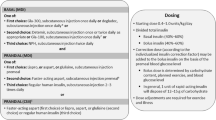Abstract
We have studied the controlled-release properties and relative systemic availabilities of two dosages of the same controlled-release (CR) diltiazem tablet formulation by comparing them at steady state with those of an immediate-release formulation. We measured 24-hour plasma concentration profiles during 4-day treatments with diltiazem 90 mg CR tablet bd diltiazem 120 mg CR tablet bd, and conventional diltiazem 60 mg immediate-release (IR) tablet tid. The study had a randomized, three-way crossover design. Twelve healthy men (38–52 y) participated.
Trough plasma concentrations were determined on days 3 and 4. The 24-h plasma concentration-time profiles were assessed after the last morning dose on day 4 of each period. The following steady-state pharmacokinetic values were calculated: the minimum plasma concentration (Cmin), the maximum plasma concentration (Cmax), the time interval during which the plasma concentration exceeded 75% of Cmax (t75), the area under the plasma concentration-time curve (AUC72–96), the peak-to-trough fluctuation (PTF), and the area-under-the-curve fluctuation (AUCF).
Steady state was achieved on day 3. The pharmacokinetics were comparable. For diltiazem CR 90 mg and diltiazem CR 120 mg, AUC84–96 (night) was approximately 75% of AUC72–84 (daytime). The diltiazem plasma concentration increased slowly from about 6 h after the evening dose of both CR tablets, resulting in relatively high plasma concentrations in the early morning hours. Only during treatment with diltiazem CR 120 mg were the plasma concentrations of diltiazem maintained above the minimum therapeutic plasma concentration of 50 μg·1−1 throughout the full 24 h.
In conclusion, twice-daily treatment with diltiazem CR tablets can replace thrice-daily treatment with the conventional diltiazem IR tablet. The early morning rise of the diltiazem plasma concentration, which might lead to a lower incidence of ischaemic events, may be an important clinical advantage of both CR tablets. Because of the minimum therapeutic plasma concentration of 50 μg·1−1, twice-daily administration of the 120 mg CR tablet may be preferred from a therapeutic point of view.
Diltiazem, a benzothiazepine, is a calcium antagonist used in the treatment of angina pectoris and hypertension. The anti-ischaemic mechanism of diltiazem seems to result from an increase of myocardial oxygen supply and a reduction in myocardial oxygen demand, respectively by coronary artery dilatation and/or direct and indirect haemodynamic effects, such as afterload reduction and heart rate decrease (Braunwald 1982). Its therapeutic effect is evident at daily dosages between 180 and 360 mg (Low et al. 1981). After oral administration it is almost completely absorbed from the gastrointestinal tract, but owing to extensive first-pass metabolism, its systemic availability is approximately 40–50% (Echizen and Eichelbaum 1986). The time to maximum plasma concentrations after oral administration of immediate-release formulations is approximately 3 to 4 h. The elimination half-life of diltiazem is 3.5–7 h, implying that frequent dosing is required to maintain effective plasma concentrations. Therefore, a controlled-release formulation of diltiazem, designed to be taken twice daily, has been developed.
The aim of this crossover study was to compare the systemic availability and steady-state pharmacokinetics of a controlled-release diltiazem tablet formulation (90 and 120 mg) with those of a conventional diltiazem immediate-release tablet in healthy volunteers.
Similar content being viewed by others
References
Blüme H, Mutschler E (1989) Bioäquivalenz. Qualitätsbewertung wirkstoffgleicher Fertigarzneimittel. Govi, Frankfurt
Bonlieu R, Bonnefous JL, Ferry S (1990) Determination of diltiazem and its metabolites in plasma by high performance liquid chromatography. J Liquid Chromatography 13: 291–301
Braunwald E (1982) Mechanism of action of calcium-channel-blocking agents. N Engl J Med 307: 1618–1627
Echizen H, Eichelbaum M (1986) Clinical pharmacokinetics of verapamil, nifedipine and diltiazem. Clin Pharmacokinetics 11: 425–449
Low RI, Takeda P, Lee G, Mason DT, Awan NA, De Maria AM (1981) Effect of diltiazem-induced calcium blockade upon exercise capacity in effort angina due to chronic coronary artery disease. Am Heart J 101: 713–718
Montamat SC, Abernethy DR (1989) Calcium antagonists in geriatric patients: diltiazem in elderly persons with hypertension. Clin Pharmacol Ther 45: 682–691
Opie LH (1987a) Calcium ions, drug action and the heart — with special reference to calcium channel blockers (calcium antagonist drugs). In: Denborough MA (ed) The role of calcium in drug action. Pergamon Press, Oxford, pp 103–138
Opie LH (1987b) Calcium channel antagonists. Part 1. Fundamental properties, mechanisms, classification, sites of action. Cardiovasc Drugs Ther 1: 411–430
Opie LH (1990) Fundamental properties: mechanisms, classification, sites of action. In: Opie LM (ed) Clinical use of calcium channel antagonist drugs. Kluwer, Norwell, Massachusetts, pp 28–69
Rocco MB, Barry S, Cambell S (1987) Circadian variation of transient myocardial ischemia in patients with coronary artery disease. Circulation 75: 395–400
Schuirmann DJ (1987) A comparison of the two one-sided tests procedure and the power approach for assessing the equivalence of average bioavailability. J Pharmacokinet Biopharm 15: 657–680
Steinijans VW (1990) Pharmacokinetic characterization of controlled-release formulations. Eur J Drug Metab Pharmacokinet 15: 173–181
Author information
Authors and Affiliations
Rights and permissions
About this article
Cite this article
Leeuwenkamp, O.R., Visscher, H.W., Mensink, C.K. et al. A comparative study of the steady-state pharmacokinetics of immediate-release and controlled-release diltiazem tablets. Eur J Clin Pharmacol 46, 243–247 (1994). https://doi.org/10.1007/BF00192556
Received:
Accepted:
Issue Date:
DOI: https://doi.org/10.1007/BF00192556




